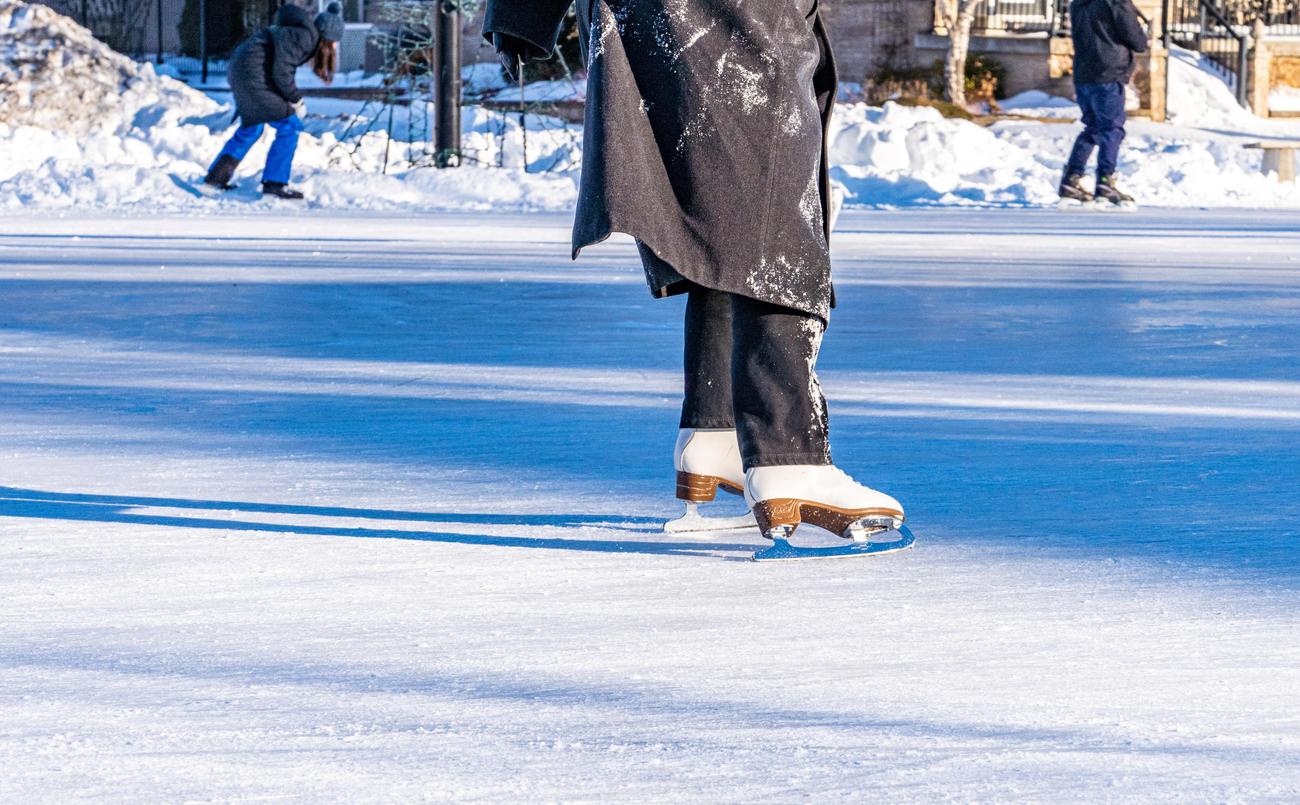Are you ready to lace up your skates and dive into the fascinating world of hockey? In this article, we will embark on a thrilling journey through the realm of hockey skates, uncovering an array of fun and intriguing facts that will leave you astounded. Whether you’re an avid hockey player seeking to deepen your understanding of the gear that propels you across the ice or simply a curious reader craving some fascinating insights, this article is sure to satiate your thirst for knowledge. So, fasten your seatbelts, or rather, your skate straps, as we delve into the captivating world of hockey skate secrets!

Fun Facts About Hockey Skates
Hockey skates are an essential piece of equipment for any player stepping onto the ice. They provide the traction and agility needed to perform at their best. But did you know there are some intriguing fun facts about hockey skates? Let’s dive into the fascinating world of hockey skate trivia.
Short Blades for Goalies
One interesting fact is that goalie’s skate blades in ice hockey are actually shorter than those of other players. This is because goalies need improved balance and lateral movement. With shorter blades, goalies can quickly move from side to side in the crease, making those incredible saves that keep us on the edge of our seats. It’s amazing how even the smallest details can greatly impact a player’s performance.
“Shorter blades on goalie skates allow for improved balance and lateral movement, crucial for making those lightning-fast saves.”
The Difference Between Ice Hockey Skates and Figure Skates
While both ice hockey skates and figure skates are designed for ice sports, there are some key differences. Ice hockey skates, unlike figure skates, have a smooth blade with only one edge. This design allows hockey players to maneuver quickly and effortlessly on the ice. Figure skates, on the other hand, have two edges on their blades, enabling skaters to perform intricate moves and jumps with precision. It’s fascinating to see how the design of a skate blade can cater to the specific needs of different sports.
“Ice hockey skates are unique with their smooth, single-edged blades, perfect for the fast-paced, agile movements of the game.”
Pre-Profiled Blades and Profiling
When you buy a new pair of skate blades, they usually come pre-profiled to a 9 or 10 ft radius from the manufacturer. This means that the blade is already shaped with a specific curve. The purpose of this pre-profiled radius is to provide a neutral starting point for skaters, allowing them to adapt and experiment with different profiles.
Profiling is a process where the shape of the blade is altered by a professional sharpener. It may provide marginal gains in performance, but these differences are usually only noticeable at advanced and expert levels of play. Beginners are unlikely to feel the difference in profiled blades.
“New skate blades come with a pre-profiled radius from the manufacturer, allowing skaters to experiment and find their ideal blade shape.”
Determining the optimal profile for a particular player is a personalized journey. It can only be achieved by trying different options and finding what works best for an individual’s playing style and preferences. So, if you’re a hockey player looking to get the most out of your skates, don’t hesitate to explore different blade profiles and see how they enhance your performance.
“Finding the perfect blade profile is an ongoing process, unique to each player. Embrace the journey of testing and trying until you find your perfect fit.”
In conclusion, hockey skates hold more mysteries and secrets than meet the eye. From the significance of goalie blade length to the contrasting designs of hockey and figure skates, every detail plays a crucial role in ensuring optimal performance on the ice. So, next time you lace up your hockey skates, remember these fun facts and appreciate the engineering behind this essential piece of equipment.
Remember:
– Goalie blades are shorter for improved balance and lateral movement.
– Ice hockey skates have smooth, single-edged blades, while figure skates have two edges.
– New skate blades come pre-profiled, but the real difference is noticed by advanced players.
– Finding the best blade profile is a personalized journey of trial and error.
Hockey is an incredibly exhilarating sport that is full of interesting and entertaining tidbits. If you are a fan of this fast-paced game or simply curious about it, you must check out these fun facts about hockey. From the origins of the game to quirky records and astonishing player achievements, there is something for everyone. So, what are you waiting for? Click here to dive into the fascinating world of hockey: fun facts about hockey. Don’t miss out on this opportunity to expand your knowledge and impress your friends with these captivating hockey facts!
Fun facts about hockey skates are always intriguing, especially when you delve into the fascinating history and design behind them. Did you know that hockey skates have evolved significantly over the years? From their humble beginnings to the high-tech marvels we see today, the evolution of hockey skates is truly a captivating journey. Discover some interesting and amusing tidbits about hockey skates that will leave you wanting to lace up a pair and hit the ice. And if you’re looking for even more fascinating trivia about hockey skates, be prepared to be amazed by the innovative features and design elements that make them a vital tool for every hockey player. So, if you’re craving some amusing hockey skate knowledge, check out these interesting facts about hockey skates here: interesting facts about hockey skates, fascinating trivia about hockey skates, and amusing tidbits about hockey skates. Happy reading and skating!
When it comes to selecting your first pair of ice hockey skates, there are several important factors to consider. In this article, we will be discussing one of these crucial factors: the stiffness of the skate.
[youtube v=”U7DGIzG381g”]
Before we delve into the details, let’s establish the different levels of skates available: beginner, intermediate, and advanced. Depending on your level of experience and the purpose of your skating, the type of skate you choose will vary. For beginners looking to get their first pair of skates for recreational or casual play, it is important to understand the different levels and their recommended options.
To illustrate the importance of skate stiffness, let’s compare two skate models: the Bauer Flexlite 3.0 and the Bauer Flexlite 1.0. While both skates belong to the same brand, there are significant differences between them, particularly in terms of stiffness.
The Bauer Flexlite 3.0 is a relatively stiff skate, as demonstrated through a quick stiffness test. Squeezing the boot shows minimal give, indicating a higher level of stiffness. On the other hand, the Bauer Flexlite 1.0 is much softer, allowing for more flexibility and movement. This softer boot is ideal for beginners as it allows them to bend and flex their feet inside the skate, essential for learning basic skills such as tight turns, balance, weight placement during stops and turns, and more.
It is crucial for beginners to opt for a softer skate to learn the basics properly. Attempting to learn with a stiffer boot can hinder your progress by restricting movement and preventing proper weight distribution. Soft skates provide the necessary flexibility and allow beginners to grasp the fundamental skills before advancing to higher levels.
As you move up in price range, skates offer more features and a stiffer boot. It’s essential to note that just because you see professional hockey players wearing certain skates, such as those worn by renowned player Alexander Ovechkin, it does not mean they are suitable for beginners. These skates are expensive and designed for advanced players with specific needs.
Apart from stiffness, there are other features to consider when selecting skates. The structure of the skate plays a significant role in its performance. For example, the Bauer Flexlite 1.0 features a simple sublimated design with minimal support, ideal for beginners who wouldn’t want excessive energy returns or protection against impacts. On the other hand, the Bauer Flexlite 3.0 incorporates a direct energy return system, offering additional support against impacts while returning energy to the skater.
Another critical component of a skate is the outsole, which directly transfers movement and motion from your foot to the blade. Beginner to intermediate level skates like the Bauer Flexlite 3.0 typically feature a TPU (thermoplastic polyurethane) outsole, providing a good balance of rigidity and energy return. However, as you progress to higher-level skates, the outsoles become stiffer and more advanced, resulting in a more responsive skate.
Determining the level of skates can also be done through various indicators, such as price points and features. Generally, skates priced below £150 are suitable for beginners, but it’s important to consider other factors as well. Intermediate to advanced skates often possess additional features like full composite outsoles and high-quality laces.
Selecting skates that are appropriate for your level is crucial to your development as a skater. Using skates that are too stiff for your skill level will prolong your learning process and potentially lead to difficulties and even injuries. It’s recommended to start with softer skates and gradually work your way up as you gain proficiency and experience.
In conclusion, when choosing your first pair of ice hockey skates, take into consideration the stiffness of the boot. Beginners should opt for softer skates to learn the basics effectively, while advanced players can benefit from stiffer skates. Remember to research and consider all the features and factors when making your decision. For more detailed information, feel free to check out the full article, which includes video clips and images, by following the link in the video description. And lastly, don’t forget to subscribe to our channel for more informative content. Happy skating!
FAQ
Question 1
What is the difference between goalie’s skate blades and those of other players?
Answer 1
Goalie’s skate blades in ice hockey are shorter than other players to improve balance and lateral movement.
Question 2
How are ice hockey skates different from figure skates?
Answer 2
Ice hockey skates are different from figure skates as they are smooth and only have one edge.
Question 3
Do new skate blades come pre-profiled?
Answer 3
Yes, new skate blades come pre-profiled to a 9 or 10 ft radius from the manufacturer and are neutrally pitched.
Question 4
Is profiling the shape of the blade necessary for all hockey players?
Answer 4
Profiling, which is altering the shape of the blade, provides marginal gains, but it is only noticeable at advanced and expert levels.
Question 5
Can beginners feel the difference of profiled blades?
Answer 5
No, beginners won’t feel the difference of profiled blades as the effects are more evident at advanced levels.
- Unlock Water’s Symbolism: A Cross-Cultural Exploration - April 20, 2025
- Identify Black and White Snakes: Venomous or Harmless? - April 20, 2025
- Unlocking Potential: Origins High School’s NYC Story - April 20, 2025















